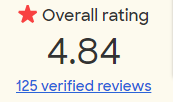Pediatric Deformities
All parents are concerned about the well-being and growth of their children. Oftentimes the parent wore corrective shoes as a child or now has problems with their feet or ankles and wonders if their child will have the same fate. Below is a list of common concerns, what is considered normal, and when to seek professional advice and help from a podiatrist.
Pediatric foot deformity is a term that includes a range of conditions that may affect the bones, tendons, and muscles of the foot. Among those most frequently treated by Dr. Rosenzweig are cavus foot, tarsal coalition, clubfoot, accessory navicular, and juvenile bunion.
Treatment of foot deformities in children can vary significantly from that needed in adults. Fortunately, pediatric orthopedists, such as Dr. David Rosenzweig, who specializes in this field can bring to bear a range of non-operative and operative techniques specifically developed to address the distinctive needs of children, which include special attention to preserving the integrity of the growth plate, allowing continued growth and development of the foot.
Flat Feet: This condition is often referred to as pronation. All people pronate to some degree, but excessive pronation can lead to problems such as bunions and heel pain in adults. A large part of the tendency to pronate is inherited from the parents. It is normal for children to be flat-footed up until the age of 6 years because of how the baby is positioned in utero and the development of the feet and legs after birth. If your child is over 6 years old, has one foot that is positioned much differently than the other foot, complains of pain or night cramps, or if a family member has had problems due to flat feet, you should see a podiatrist for consultation.
Toe Walking: Toe walking can be a normal finding in early walkers. Children should, however, start to walk heel to toe after 6 months of walking. If toe walking persists, you should always see a podiatrist to rule out an underlying neurological or musculoskeletal condition.
Bow Legs: At birth, infants have a small degree of bowing in their legs because of their position in the womb. This condition is usually temporary and the child will outgrow the bow legs by age 2 years. If the child still has bowing past 3 years, you should see your podiatrist.
Knock Knee: Knock knee is also a part of normal development during a child’s growth. This condition usually starts at about age 2 and reaches its maximum at about age 4 years. It tends to disappear at age 6 or 7 years. If this condition is accompanied by foot, ankle, or knee pain or excessive tripping, or one leg looks much different from the other, see your podiatrist.
In-Toeing: The tendency to be in-toed (pigeon-toed), like many of the previous conditions discussed, is inherited from the parents. A mild degree of in-toeing is perfectly normal. In fact, many professional athletes in-toe. Many children will outgrow this tendency by age 7 or 8 years. Some in-toeing is due to the position of the foot bones at birth. If your child is born with his or her toes pointed in and the foot forms a “C” shape when viewed from the bottom, you should consult a podiatrist. Seeing a podiatrist earlier may make it easier to correct this condition. If your child is older, and he or she often trips or complains of foot or knee pain, see your podiatrist.
If you are troubled about a specific condition, a condition which is not discussed on this website, or have a pertinent family foot health history, then a consultation with the podiatrist is advised.
Advanced Footcare Center
90 South Ridge Street
Rye Brook, New York 10573
T: (914) 937-7077
E: info@footdoctorcenters.com

